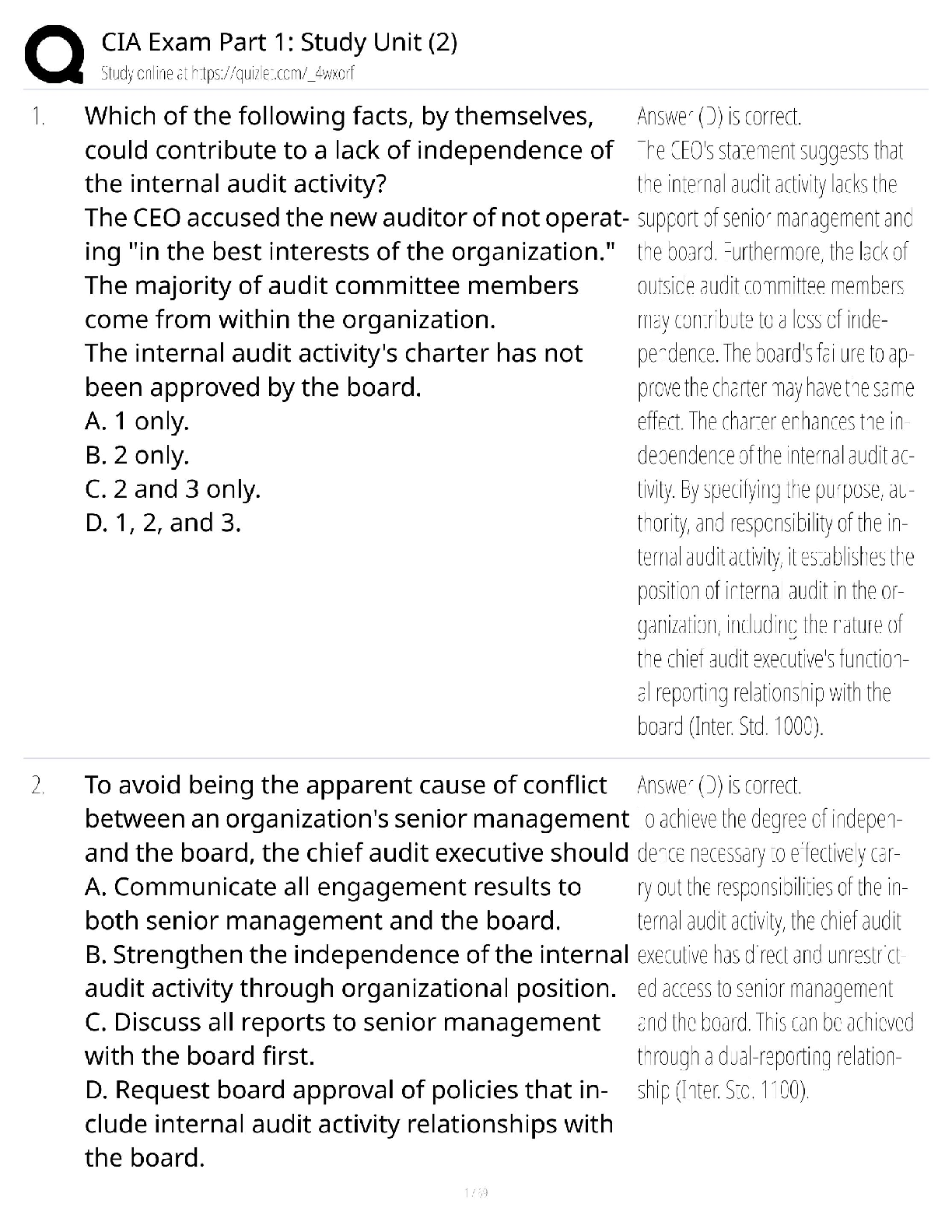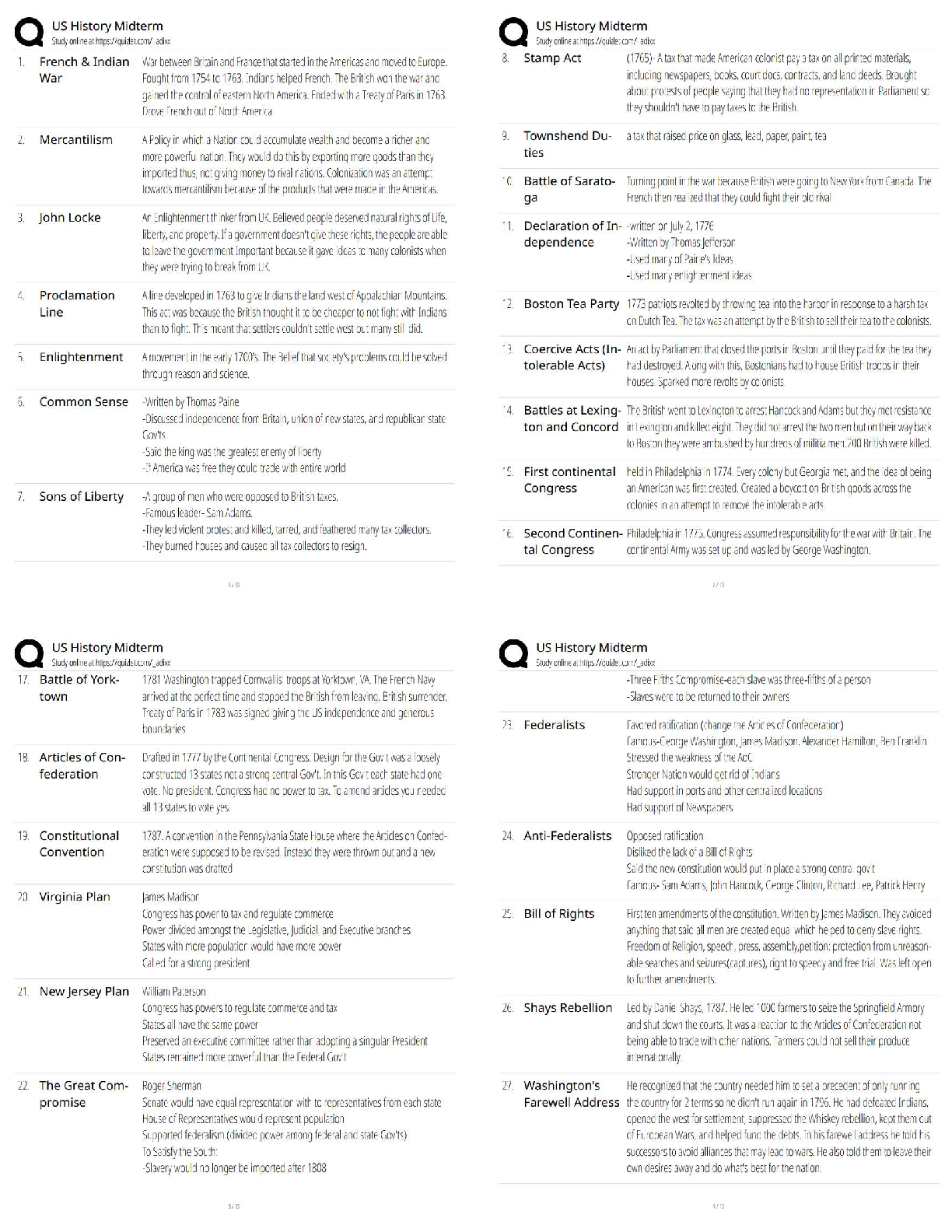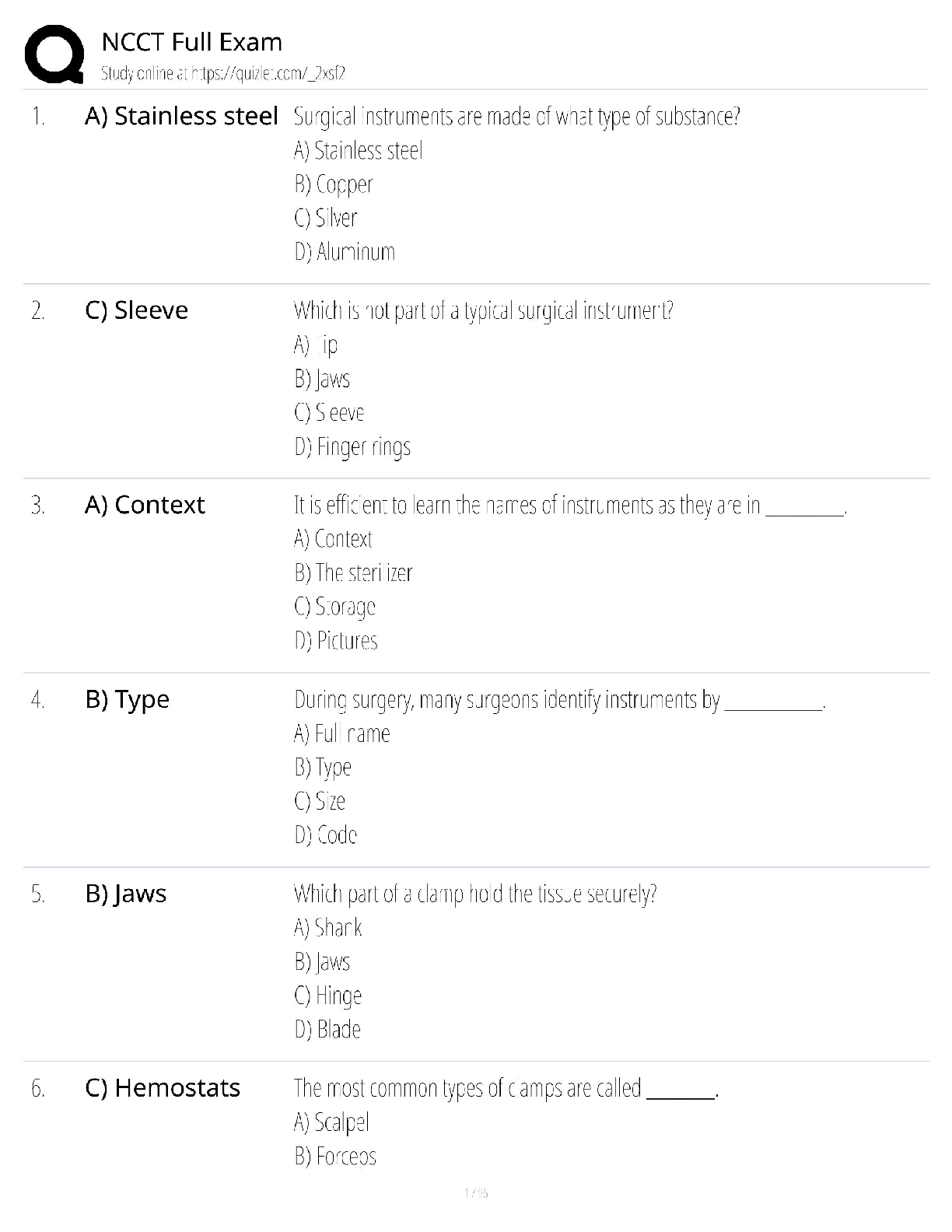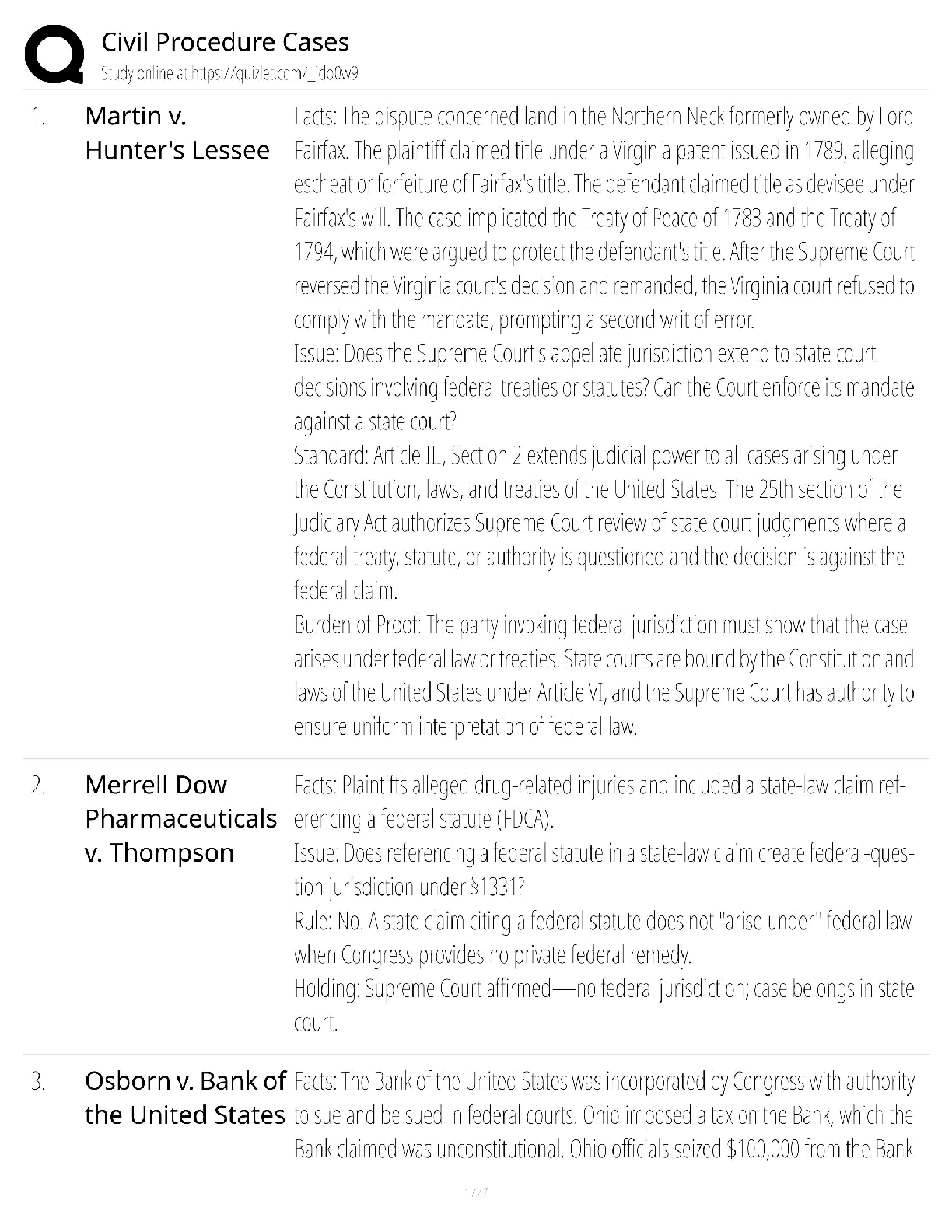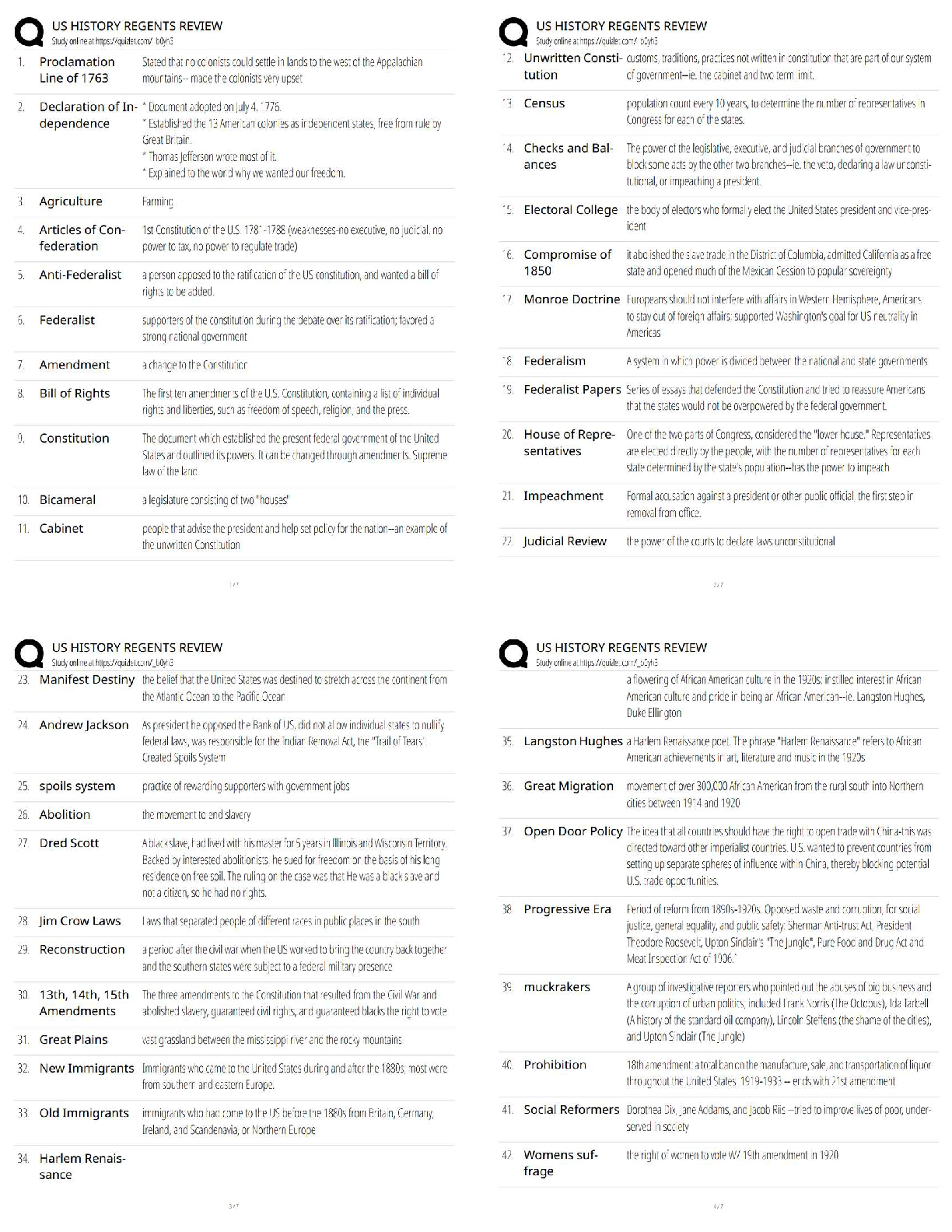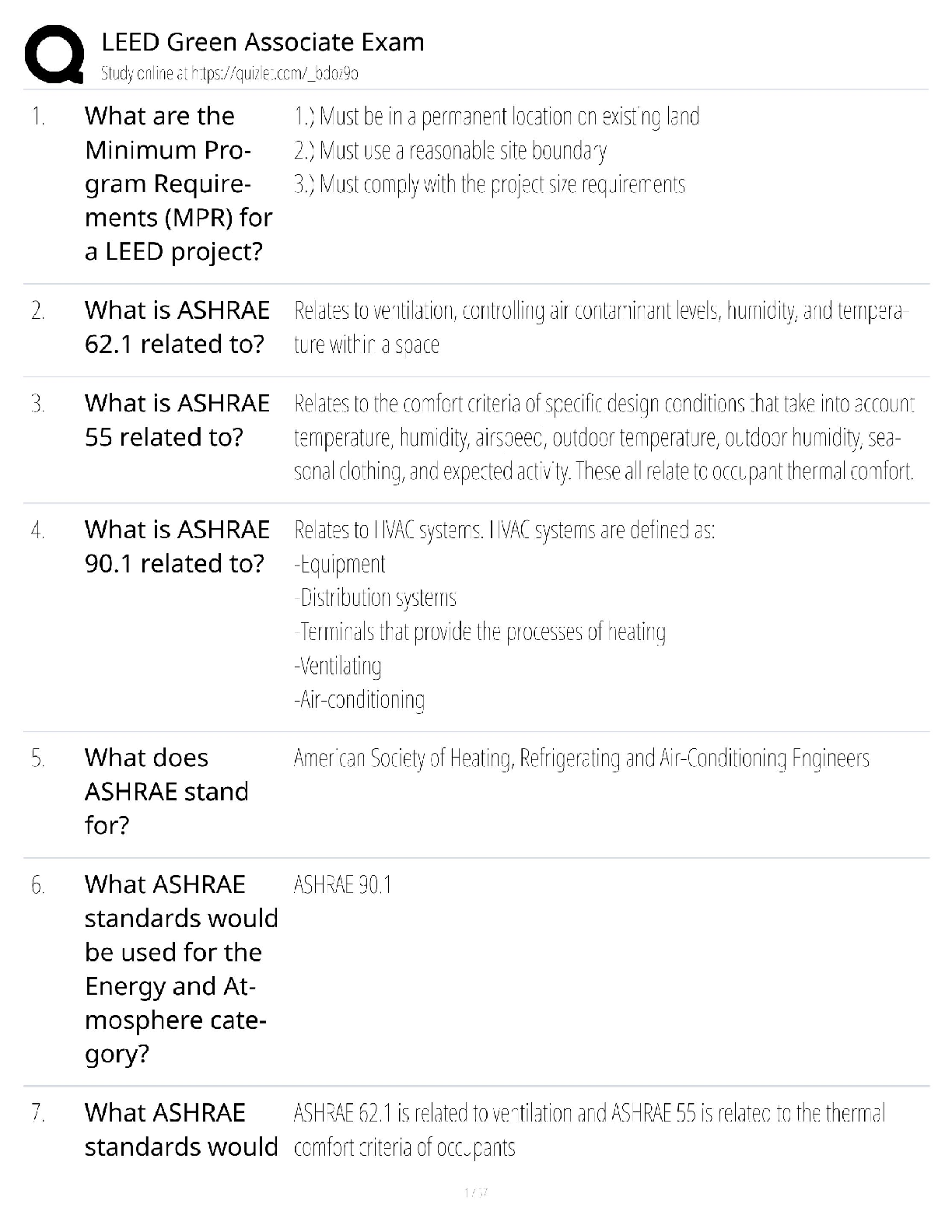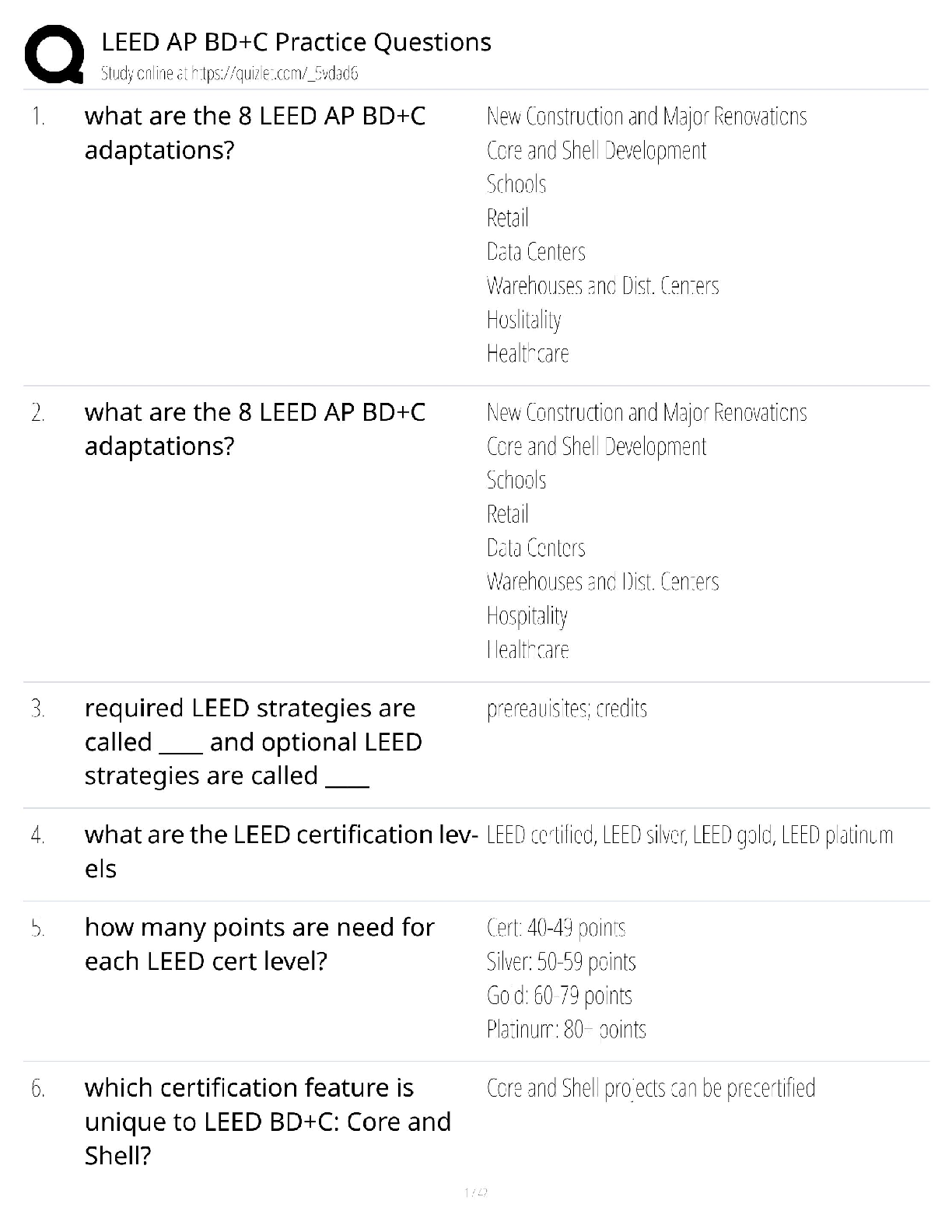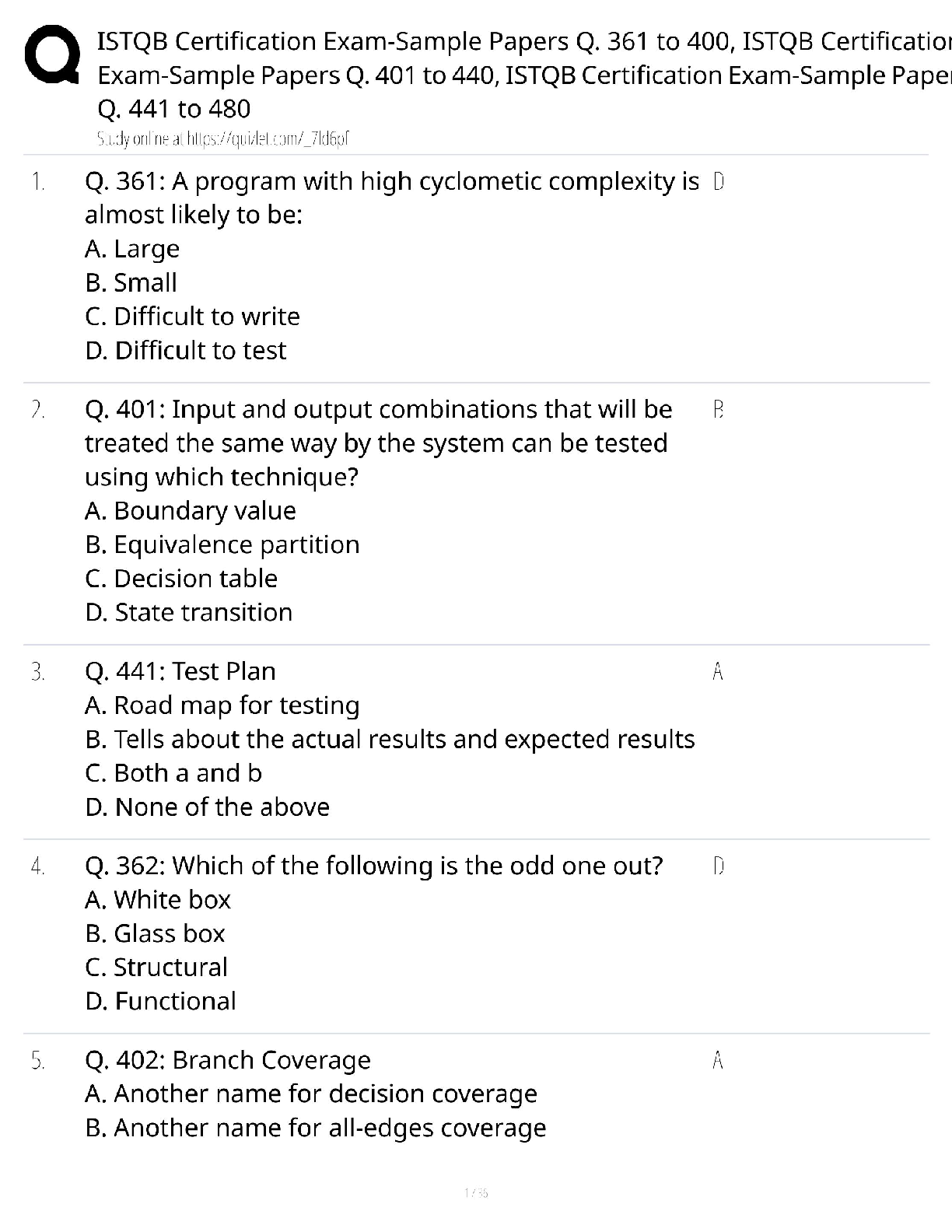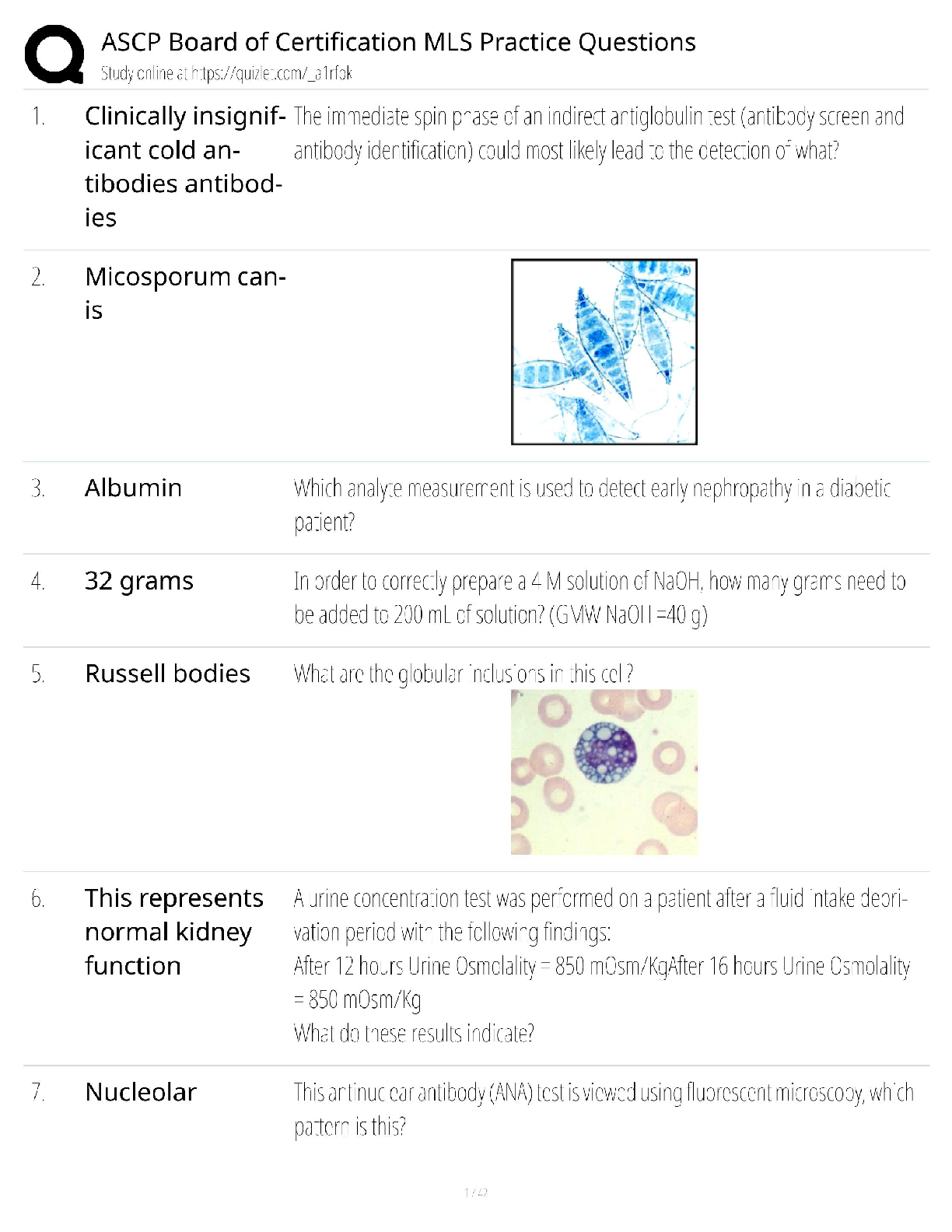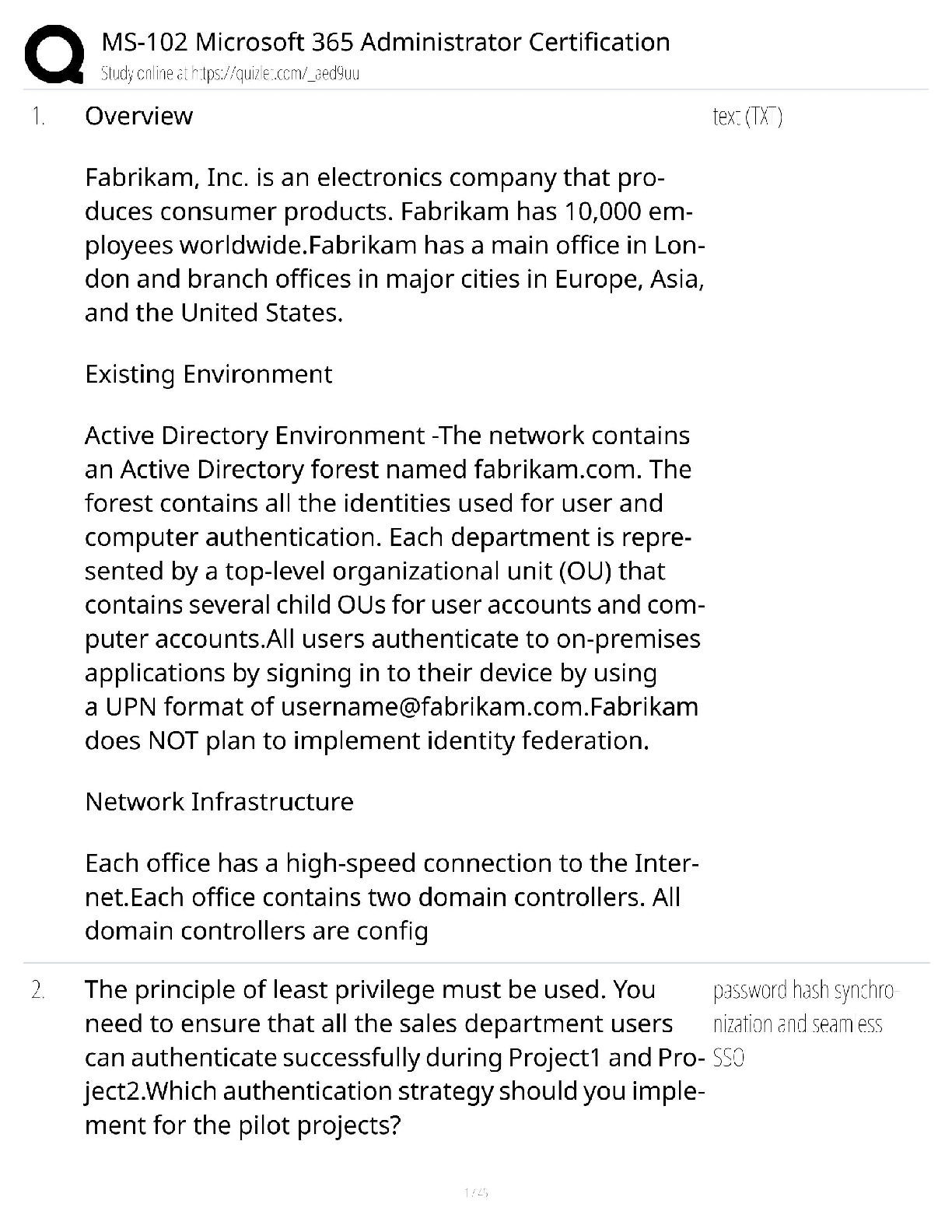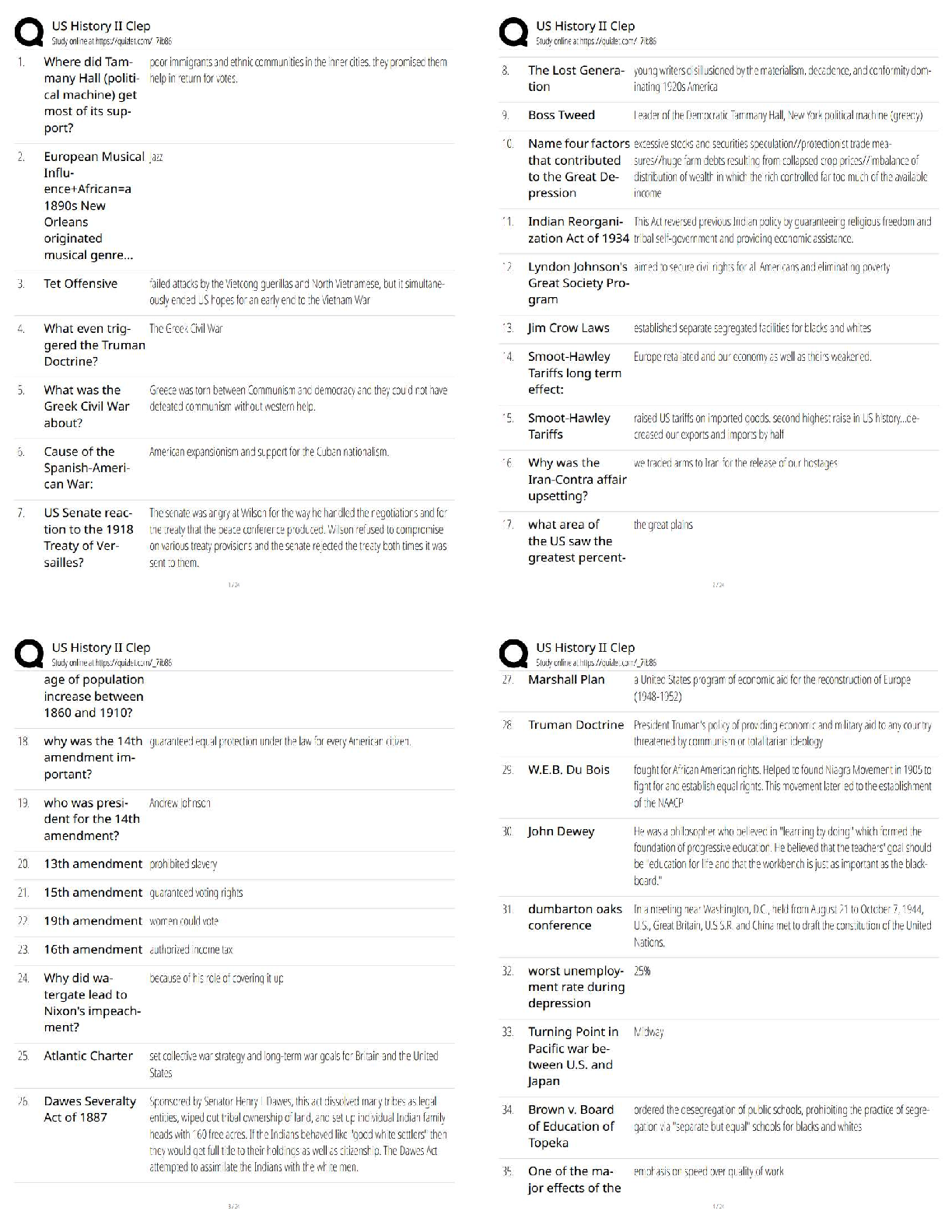*NURSING > QUESTIONS & ANSWERS > NR 509 Final Exam Q&A With Complete Solution(100% VERIFIED) (All)
NR 509 Final Exam Q&A With Complete Solution(100% VERIFIED)
Document Content and Description Below
NR 509 Final Exam Q&A With Complete Solution(100% VERIFIED) Appendicitis Correct Answer- 1. McBurney point tenderness 2. Rovsing sign 3. the psoas sign 4. the obturator sign --Appendicitis is tw ... ice as likely in the presence of RLQ tenderness, Rovsing sign, and the psoas sign --The pain of appendicitis classically begins near the umbilicus, then migrates to the RLQ. Older adults are less likely to report this pattern. --Localized tenderness anywhere in the RLQ, even in the right flank, suggests appendicitis. McBurney Point Correct Answer- 1. McBurney point lies 2 inches from the anterior superior spinous process of ilium on a line drawn from that process to the umbilicus 2. Appendicitis is three times more likely if there is McBurney point tenderness. Rovsing sign Correct Answer- Press deeply and evenly in the LLQ. Then quickly withdraw your fingers. Pain in the RLQ during left-sided pressure is a positive Rovsing sign. Psoas Sign Correct Answer- --Place your hand just above the patient's right knee and ask the patient to raise that thigh against your hand. Alternatively, ask the patient to turn onto the left side. Then extend the patient's right leg at the hip. Flexion of the leg at the hip makes the psoas muscle contract; extension stretches it. --Increased abdominal pain on either maneuver is a positive psoas sign, sug-gesting irritation of the psoas muscle by an inflamed appendix. Obturator Sign Correct Answer- --Less helpful --Flex the patient's right thigh at the hip, with the knee bent, and rotate the leg internally at the hip. This maneuver stretches the internal obturator muscle. --Right hypogastric pain is a positive obturator sign, from irritation of the obturator muscle by an inflamed appendix. This sign has very low sensitivity.Acute Cholecystits Correct Answer- RUQ pain Murphy Sign Murphy Sign Correct Answer- Hook your left thumb or the fingers of your right hand under the costal margin at the point where the lateral border of the rectus muscle intersects with the costal margin. Alternatively, palpate the RUQ with the fingers of your right hand near the costal margin. If the liver is enlarged, hook your thumb or fingers under the liver edge at a comparable point. Ask the patient to take a deep breath, which forces the liver and gallbladder down toward the examining fingers. Watch the patient's breathing and note the degree of tenderness. --A sharp increase in tenderness with inspiratory effort is a positive Murphy sign. When positive, Murphy sign triples the likelihood of acute cholecystitis. Acute Pancreatitis Process Correct Answer- Intrapancreatic trypsinogen activation to trypsin and other enzymes, result-ing in autodigestion and inflammation of the pancreas Acute Pancreatitis Location Correct Answer- Epigastric, may radiate straight to the back or other areas of the abdomen; 20% with severe sequelae of organ failure Acute Pancreatitis Quality Correct Answer- Usually steady Acute PancreatitisTiming Correct Answer- Acute onset, persistent pain Acute Pancreatitis Aggrevating Factors Correct Answer- Lying supine; dyspnea if pleural effusions from capillary leak syn-drome; selected medications, high triglycerides may exacerbate Acute Pancreatitis Relieving factors Correct Answer- Leaning forward with trunk flexed Acute Pancreatitis Associated Symptoms and Setting Correct Answer- Nausea, vomiting, abdominal distention, fever; often recurrent; 80% with history of alcohol abuse or gallstones Peptic Ulcer Disease Process Correct Answer- Mucosal ulcer in stomach or duode-num >5 mm, covered with fibrin, ex-tending through the muscularis mu-cosa; H. pylori infection present in 90% of peptic ulcersPeptic Ulcer Disease Location Correct Answer- Epigastric, may radiate straight to the back Peptic Ulcer Disease Quality Correct Answer- Variable: epigastric gnawing or burning (dyspepsia); may also be boring, aching, or hungerlike No symptoms in up to 20% Peptic Ulcer Disease Timing Correct Answer- Intermittent; duodenal ulcer is more likely than gastric ulcer or dyspepsia to cause pain that (1) wakes the patient at night, and (2) occurs intermittently over a few wks, disappears for months, then recurs Peptic Ulcer Disease aggravating factors Correct Answer- Variable Peptic Ulcer Disease relieving factors Correct Answer- Food and antacids may bring re-lief (less likely in gastric ulcers) Peptic Ulcer Disease associated symptoms and setting Correct Answer- Nausea, vomiting, belching, bloating; heartburn (more common in duodenal ulcer); weight loss (more common in gastric ulcer); dyspepsia is more com-mon in the young (20-29 yrs), gastric ulcer in those over 50 yrs, and duodenal ulcer in those 30-60 yrs GERD Process Correct Answer- Prolonged exposure of esophagus to gastric acid due to impaired esophageal motility or excess relaxations of the lower esophageal sphincter; Helico-bacter pylori may be present GERD Location Correct Answer- Chest or epigastric GERD Quality Correct Answer- Heartburn, regurgitation GERD timing Correct Answer- After meals, especially spicy foodsGERD aggravating factors Correct Answer- Lying down, bending over; physical activity; diseases such as scleroderma, gastroparesis; drugs like nicotine that relax the lower esophageal sphincter GERD : relieving factors Correct Answer- Antacids, proton pump inhibi-tors; avoiding alcohol, smoking, fatty meals, chocolate, selected drugs such as theophylline, cal-cium channel blockers GERD associated symptoms and setting Correct Answer- Wheezing, chronic cough, short-ness of breath, hoarseness, choking sensation, dysphagia, regurgitation, halitosis, sore throat; increases risk of Barrett esophagus and esopha-geal cancer Diverticulitis process Correct Answer- Acute inflammation of colonic diver-ticula, outpouchings 5-10 mm in di-ameter, usually in sigmoid or descend-ing colon Diverticulitis location Correct Answer- Left lower quadrant Diverticulitis quality Correct Answer- May be cramping at first, then steady Diverticulitis timing Correct Answer- Often gradual onset Diverticulitis aggravating factors Correct Answer- -- Diverticulitis relieving factors Correct Answer- Analgesia, bowel rest, antibiotics Diverticulitis associated symptoms and setting Correct Answer- Fever, constipation. Also nausea, vomiting, abdominal mass with rebound tenderness Hepatitis Correct Answer- -Tenderness over liver (liver inflammation) --Hep A and B prevention: Vaccination Hep A: spread through fecal matter and asymptomatic children Hep B: 1% fatality, 15-25% of chronic infection die from cirrhosis or liver cancer (usually asymptomatic until onset of advanced liver disease).Hep C: Mainly percutaneous exposure. Hepatitis B high risk Correct Answer- -Sexual contact: w/ partners infected, more than one parter in prior 6 mos, people seeing eval of treatment for STD, men with men -Perc and Mucosal exposure to blod: drugs, household contacts, residents and staff of facilties of DD, Health care, dialysis -Others: Travel to endemic areas, chronic liver disease and HIV, people seeking protection from Hep B. --All adults in high risk-settings: STD clinics, HIV programs, Drug programs, correctional facilities, programs for gay men, chronic hemodialysis facilities, facilities for people with Developmental Delays. IBS patterns Correct Answer- 1. diarrhea—predominant 2. constipation—predominant 3. mixed. --Symptoms present ≥6 mo and abdominal pain for ≥3 mo plus at least 2 of 3 features (improvement with defecation; onset with change in stool frequency; onset with change in stool form and appearance) IBS: process Correct Answer- Altered motility or secretion from luminal and mucosal irritants that change mucosal permeability, immune activation, and colonic transit, including maldigested carbohydrates, fats, excess bile acids, gluten intolerance, entero-endocrine signaling, and changes in microbiomes IBS characteristics of stool Correct Answer- Loose; ∼50% with mucus; small to mod-erate volume. Small, hard stools with constipation. May be mixed pattern. IBS timing Correct Answer- Worse in the morning; rarely at night. IBS associated symptoms Correct Answer- Crampy lower ab-dominal pain, ab-dominal disten-tion, flatulence, nausea; urgency, pain relieved with defecation IBS setting, persons at risk Correct Answer- Young and middle-aged adults, especially womenStress Incontinence problem Correct Answer- The urethral sphincter is weakened so that transient increases in intra-abdominal pressure raise the bladder pressure to levels that exceed urethral resistance. Stress Incontinence mechanisms Correct Answer- In women, pelvic floor weakness and inadequate muscular and ligamentous support of the bladder neck and proximal urethra change the angle between the bladder and the urethra (see Chapter 14, pp. 592-593). Causes include childbirth and surgery. Local conditions affecting the internal urethral sphincter, such as postmenopausal atrophy of the mucosa and urethral infection, may also contribute. In men, stress incontinence may follow prostate surgery. Stress Incontinence symptoms Correct Answer- Momentary leakage of small amounts of urine with coughing, laughing, and sneezing while the person is in an upright position. Urine loss is unrelated to a conscious urge to urinate. Stress Incontinence Physical signs Correct Answer- Stress incontinence may be demonstrable, especially if the patient is examined before voiding and in a standing position. Atrophic vaginitis may be evident. Bladder distention is absent. Urge incontinence problem Correct Answer- Detrusor contractions are stronger than normal and overcome the normal urethral resistance. The bladder is typically small. Urge incontinence mechanism Correct Answer- Decreased cortical inhibition of detrusor contractions from stroke, brain tumor, dementia, and lesions of the spinal cord above the sacral level. Hyperexcitability of sensory pathways, as in bladder infections, tumors, and fecal impaction. Deconditioning of voiding reflexes, as in frequent voluntary voiding at low bladder volumes. Urge incontinence symptoms Correct Answer- Involuntary urine loss preceded by an urge to void. The volume tends to be moderate. Urgency, frequency, and nocturia with small to moderate volumes. If acute inflammation is present, pain on urination. Possibly "pseudo-stress incontinence"—voiding 10-20 sec after stresses such as a change of position, going up-or downstairs, and possibly coughing, laughing, or sneezing.Urge incontinence physical signs Correct Answer- The small bladder is not detectable on abdominal examination. When cortical inhibition is decreased, mental deficits or motor signs of central nervous system disease are often present. When sensory pathways are hyperexcitable, signs of local pelvic problems or a fecal impaction may be present. Overflow incontinence problem Correct Answer- Detrusor contractions are insufficient to overcome urethral resistance, causing urinary retention. The bladder is typically flaccid and large, even after an effort to void. Overflow incontinence mechanisms Correct Answer- Obstruction of the bladder outlet, as in benign prostatic hyperplasia or tumor. Weakness of the detrusor muscle associated with peripheral nerve disease at S2-4 level. Impaired bladder sensation that interrupts the reflex arc, as in diabetic neuropathy. Overflow incontinence symptoms Correct Answer- When intravesicular pressure overcomes urethral resistance, continuous dripping or dribbling incontinence ensues. Decreased force of the urinary stream. Prior symptoms of partial urinary obstruction or other symptoms of peripheral nerve disease may be present. Overflow incontinence physical signs Correct Answer- Examination often reveals an enlarged, sometimes tender, bladder. Other signs include prostatic enlargement, motor signs of peripheral nerve disease, a decrease in sensation (including perineal sensation), and diminished to absent reflexes. Functional incontinence problem Correct Answer- The patient is functionally unable to reach the toilet in time because of impaired health or environmental conditions. Functional incontinence mechanisms Correct Answer- Problems in mobility resulting from weakness, arthritis, poor vision, or other conditions. Environmental factors such as an unfamiliar setting, distant bathroom facilities, bed rails, or physical restraints. Functional incontinence symptoms Correct Answer- Incontinence on the way to the toilet or only in the early morning.Functional incontinence physical signs Correct Answer- The bladder is not detectable on examination. Look for physical or environmental clues as the likely cause. Incontinence secondary to medications problem Correct Answer- Drugs may contribute to any type of incontinence listed. Incontinence secondary to medications mechanisms Correct Answer- Sedatives, tranquilizers, anticholinergics, sympathetic blockers, and potent diuretics. Incontinence secondary to medications symptoms Correct Answer- Variable. A careful history and chart review are important. Incontinence secondary to medications physical signs Correct Answer- Variable. Colorectal cancer screening Correct Answer- Adults ages 50 to 75 years—options (grade A recommendation) 1. Hi-sens fecal occult blood testing annually 2. Sigmoidoscopy every 5 years w/ high-sensitivity FOBT every 3 years 3. Screening colonoscopy every 10 years B: Adults 76-85 1. Screening not advised because the benefits are small in comparison to the risks 2. Use individual decision making if screening an adult for the first time C. Adults older than age 85 years—do not screen (grade D recommendation) 1. Screening not advised because "competing causes of mortality preclude a mortality benefit that outweighs harms" Colorectal cancer screening tests Correct Answer- 1. Stool tests that detect occult fecal blood: a. fecal immunochemical tests, b. high-sensitivity guaiac-based tests, c. tests that detect abnormal DNA. 2. Endoscopic tests: a. colonoscopy, which visualizes the entire colon and can remove polyps, b. flexible sigmoidoscopy, which visualizes the distal 60 cm of the bowel.--Colonoscopy is the most commonly used and gold standard, though people may prefer other tests like FOBTs because they are safer and easier to perform. Colorectal cancer epidemiology Correct Answer- --Third most frequently diagnosed cancer among both men and women (over 140,000 new cases) and the third leading cause of cancer death (nearly 50,000 deaths) each year in the United States. --The lifetime risk of diagnosis with colorectal cancer is about 5%, while the lifetime risk for dying from colorectal cancer is about 2%. Colorectal cancer risk factors Correct Answer- 1. Increasing age 2. personal history of colorectal cancer 3. adenomatous polyps, or long-standing inflammatory bowel disease 4. family history of colorectal neoplasia—particularly multiple first-degree relatives, a single first-degree relative diagnosed before age 60 years, or a hereditary colorectal cancer syndrome. Weaker risk factors: 1. male sex 2. African American race 3. tobacco use 4. excessive alcohol use 5. red meat consumption 6. obesity. Colorectal cancer prevention Correct Answer- Primary prevention: 1. screen for and 2. remove pre-cancerous adenomatous polyps Also associated with decreased risk 1. Physical activity 2. Aspirin and nonsteroidal anti-inflammatory drugs (NSAIDs) 3. Postmenopausal combined hormone replacement therapy (estrogen and progestin)Abdominal insepction Correct Answer- Abnormal: purple striae: cushing syndrome Dilated veins: portal HTN from cirrhosis or ICV obstruction Ecchymosis: intraperitoneal or retroperitoneal hemorrhage Protuberant abdomen: 1. Hernia (umbilica, incisional, epigastric, 2. Diastasis Recti, 3. Lipoma, 4. Fat, 5. Gas, 6. Tumor, 7. Pregnancy, 8. Ascites Abdominal Auscultation Correct Answer- 1. Bowel sounds 2. Bruits: hepatic (Cirrhosis), Arterial with systolic and diastolic component (occlusion of aorta or large artery (ex. epigastric--renal artery stenosis/renovascular hypertension) [Show More]
Last updated: 3 years ago
Preview 1 out of 28 pages

Buy this document to get the full access instantly
Instant Download Access after purchase
Buy NowInstant download
We Accept:

Also available in bundle (1)
Click Below to Access Bundle(s)

NR 509 Full Solution Pack(Over 5 different versions of exams all 100% verified)
NR 509 Full Solution Pack(Over 5 different versions of exams all 100% verified), All you need to pass the NR EXAMS. graded A, All Weeks exams and final exams questions.
By bundleHub Solution guider 3 years ago
$32
11
Reviews( 0 )
$8.00
Can't find what you want? Try our AI powered Search
Document information
Connected school, study & course
About the document
Uploaded On
Sep 14, 2022
Number of pages
28
Written in
All
Seller

Reviews Received
Additional information
This document has been written for:
Uploaded
Sep 14, 2022
Downloads
0
Views
144












